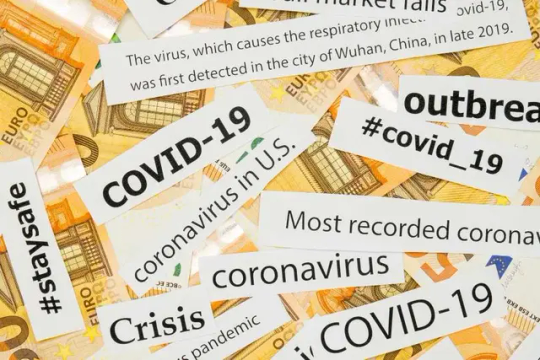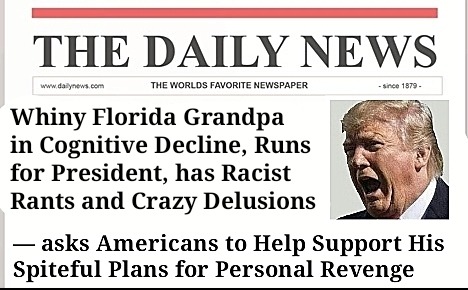#impact of coronavirus
Explore tagged Tumblr posts
Text
Also preserved in our archive
Clean air and masking makes us all healthier.
By Hugo Francisco de Souza
In a recent study published in the journal Environmental Health Perspectives, researchers evaluated the relative risks of Long COVID following human exposure to several types of environmental pollutants. Their study leveraged data from the Catalonian COVICAT cohort (n = 2,853 Catalonian adults aged 40–65) and found that while air pollutant exposure (particularly particulate matter) increased Long COVID risk (PM2.5 RR = 1.14 [95% CI: 0.97–1.37], PM10 RR = 1.15 [95% CI: 0.98–1.39]), these associations were not statistically significant. Other environmental pollutants (noise, light, and green spaces) showed no such association.
Notably, study findings validate previous research suggesting the role of suspended particulate matter in COVID-19 severity and its indirect link to Long COVID risk through heightened initial infection severity, while highlighting subtle differences in Long COVID risk across sex, age, and education levels. It helps inform clinicians and policymakers of priorities when tackling this growing global public health concern.
Background Long COVID, also called ‘post-COVID-19 syndrome’ and ‘post-acute sequelae of COVID-19 (PASC)’ is an umbrella term for a group of symptoms that develop or persist for weeks, months, or even years following recovery from a coronavirus disease of 2019 (COVID-19) infection. Its symptoms vary substantially between patients and may include post-exertional malaise, fatigue, chest or muscle pain, and ‘brain fog’ (cognitive dysfunctions).
The duration and severity of Long COVID impart significant debilitation and socioeconomic stress to patients and their families, highlighting the need for identifying its risk factors and high-risk populations. Previous research has suggested that air pollution significantly contributes to COVID-19 infection severity and, in turn, Long COVID risk. However, such findings have often been limited by short study durations, reliance on self-reported data, and insufficient sample sizes. Furthermore, the impacts of other environmental pollutants remain unknown.
About the Study The present study aims to address present knowledge gaps by investigating the associations between urban environmental pollutant exposure and subsequent Long COVID risk. It leverages detailed, longitudinal self-reported online questionnaire data from the COVICAT cohort, a long-term prospective population-based cohort of Catalonian adults (40-65 years), supplemented with baseline medical data from the GCAT study (2019).
Study data was collected via three online questionnaires administered during the pandemic (2020, 2021, and 2023). Relevant data included sociodemographics (sex, age, education level) and clinical data (COVID-19 infection severity, body mass index [BMI], general health status, and vaccination details). Participants who remained unresponsive or provided incomplete data were excluded from statistical analyses.
The study further defined and investigated the prevalence and risk associations of ‘persistent Long COVID,’ symptoms which were reported in 2021 and persisted through 2023. Urban environmental pollutant exposure was assessed based on annual averages at participants' residential addresses. These included air (suspended particulate matter [PM2.5, PM10], nitrogen dioxide [NO2], and ozone [O3]), green space availability (including normalized difference vegetation index [NDVI]), nighttime road-traffic noise, and outdoor melanopic illuminance (blue light artificial light at night [ALAN]).
The association between each individual exposure and participant outcomes was evaluated using three mixed-effect robust Poisson regression models adjusted for sociodemographic, clinical, and infection severity factors. Statistical analyses included participants reporting COVID-19 infections but no subsequent Long COVID symptoms as controls.
Study Findings Out of the 2,853 participants included in the final dataset, 700 (24.5%) reported Long COVID symptoms, of which 153 (5%) reported persistent Long COVID. Women (n = 1,788, 27.6%) reported higher Long COVID prevalence than their male counterparts (n = 1,065, 19.4%). Education was found to be a significant determinant of Long COVID incidence, with university-educated participants (n = 1,557, 22.2%) demonstrating lower prevalence than those with only primary/lower education (n = 219, 29.2%).
Prior chronic disease substantially increased Long COVID risk (n = 1,013, 33.3%). COVID-19-associated clinical data revealed that infection severity and pre-infection vaccination administration were significant determinants, with the latter reducing Long COVID risk.
Notably, apart from suspended particulate matter exposure (PM2.5 RR = 1.14 [95% CI: 0.97–1.37], PM10 RR = 1.15 [95% CI: 0.98–1.39]), no other urban environmental pollutants were found to be associated with the heightened prevalence of Long COVID. These findings align with previous reports, albeit in a Catalonian-restricted sample cohort. Researchers speculate that particulate matter may influence Long COVID risk indirectly by increasing the severity of the initial infection.
Conclusions The present study investigates the impacts of several urban environmental pollutants (air, noise, green spaces, and light) on Long COVID or persistent Long COVID risk. Study findings reveal that suspended particulate matter increased the risk of Long COVID by exacerbating the severity of the initial COVID-19 infection. Women, participants with limited education, and those with pre-existing chronic diseases were found to demonstrate substantially higher Long COVID risk than their respective counterparts. Surprisingly, other evaluated environmental pollutants were not found to impact Long COVID incidence or prevalence.
“Further research focusing on Long COVID subtypes, symptom clusters, and potential mechanisms underlying observed associations will be crucial for enhancing our understanding of this complex condition,” the researchers concluded.
Journal reference: Saucy, A., Espinosa, A., Iraola-Guzmán, S., Castaño-Vinyals, G., Harding, B. N., Karachaliou, M., Ranzani, O., De Cid, R., Garcia-Aymerich, J., & Kogevinas, M. (2024). Environmental Exposures and Long COVID in a Prospective Population-Based Study in Catalonia (COVICAT Study). In Environmental Health Perspectives (Vol. 132, Issue 11). Environmental Health Perspectives, DOI – 10.1289/ehp15377, ehp.niehs.nih.gov/doi/10.1289/EHP15377
#mask up#public health#wear a mask#pandemic#wear a respirator#covid#covid 19#still coviding#coronavirus#sars cov 2#long covid#pollution#environment#environmental impact
45 notes
·
View notes
Text
just saw a tweet that was like "imagine if 9/11 happened 2 mos earlier and 7/11 had the worst PR crisis ever" like that wasn't basically what happened to corona beer in 2020
#granted. pandemic obviously not the same impact as terrorism#& also we stopped calling it coronavirus or varients of that by like 2021 iirc#the switch to covid-19 was like. not smooth by any means but it did happen#but i do recall in 2020 when liquor stores were one of the only operating businesses#everyone being like damn... sucks to be corona rn#havent looked at the data though so idk if their bottom line or pr was impacted that bad#anecdotally i think the people i knew ended up drinking more corona that year. for the bit#alcohol /#also i forget who it was but to whoever rb'd that tweet to my dash#im not vagueing you i didnt rb it because i dont have the energy for an ID rn lmao#good idea generator#also circling back to my first tag. want to re-muddy the waters actually pandemic and 9/11 very similar#with perhaps the most major difference between the two being government willingness to do anything about it#or arguably controversially their willingness to pretend to do something about it in order to use it as a cudgel on the international stage#but we dont have time to get into All That with any sort of nuance#esp not in the tags of a one sentence post about corona's pr problems
13 notes
·
View notes
Text
I mean it is clearly doing something, I retook the sf-36 (and also added a new row for the average scores as reported in 1992 from a sample of around 2500 people who were already at the doctor's office so it is going to be skewed low compared to true population average) and this is the one and only time since I started using the measure in 2019 that I have had 3 consecutive months of green. (I got 2 months in a row of green one time, in 2021 when we finally started treating it like mcas.)
also like. the max is 100, my guesstimation of before I got sick was in the high 90s, the overall average from the paper is 64.4, and I'm still at 26.7, so. it is still Very Bad. it's just. actually moving less-bad, consistently, which has uh. never happened before lol (it's also the best I've been since arin left, after that brief respite in april last year that took time to wear off. before that the best was the prednisone in 2023 which also wore off rapidly, and before that the best was before I got covid in 2022. I actually had a year of mostly-in-the-40s when we finally started treating my mcas as mcas, except the 2 months dip back into the teens because of the vaccine which is also why I can't get a booster.) (my ultimate goal is boy howdy it would be nice to be stably hovering around 50. I can tolerate an average of 50 long term. if I can actually stably get higher than that that would be neat, but I don't need it.)
#green is improvement red is decline btw#also *technically* it is 4 months of green but the only improvement in the first month was in expected outcomes#not actual current condition#so that really doesn't count.#the expected outcome became less negative because I was actively in the process of obtaining a new medication.#coronavirus#ask to tag#btw I do love the sf-36 as a measure of disability/qol#and I do recommend taking it on a monthly basis if you are having some variable health struggle or trying a new med or whatever#I add a column of notes for any environmental stuff going on as well#I like it because it measures across a broad spectrum of life aspects and is set up to subscore for each of those categories#so you may have a decline in the social function category but an improvement in the pain category for example#and if you've set up the scoring you can see both of those things as well as how it impacts your overall score#by far the most useful measure I've personally come across
0 notes
Text
Gethsemane Enertech ERP Solution: Revolutionizing Energy Efficiency through AI, IoT & Data Science
Overview of Energy Efficiency in Ghana and Africa Energy efficiency is increasingly becoming a focal point in the energy sector, particularly in developing regions like Ghana and Africa, where energy demand is growing rapidly due to economic expansion and population growth. In these regions, energy efficiency is not just about reducing costs but also about enhancing energy security, reducing…

View On WordPress
#AI#ESG#IoT#ACEP#Africa#Climate Change#Coronavirus#Data Science#Energy Efficiency#Future of energy Conference 2024#Gethsemane Enertech ERP Solution#Ghana#GodRules#Green finance#Impact Investing#ImpactofCovid19#LoveofGod#Oil and gas#Teamwork
0 notes
Text
The Impact of Coronavirus on Mental Health
Four years in and the pandemic has brought significant attention to mental health concerns worldwide, which are not being addressed. My mental health has been affected. I still struggle, it's why I continue to write about external influences. Also, through the socials, it is clear many other individuals have struggled with anxiety, depression, loneliness and other mental health issues during these challenging times.
While there might have been a surge in published materials addressing mental health through organisations like the World Health Organisation, during the height of the pandemic, the need for ongoing support and resources still remains critical. The world has stopped talking about and dealing with mental health, but I haven't.
The CP Diary offers information, support and guidance
One way to deal with mental health concerns during these challenging times is to seek out existing resources and support networks. Indeed, my own website, The CP Diary, offers information, guidance and tools for coping with stress, anxiety and other mental health challenges, and brings clarity on many topics after 13 years of writing. Give yourself time to read through some of my blogs.
Engage in practices such as mindfulness and exercise
To deal with mental health, you can also choose to engage in self-care practices such as mindfulness, exercise as well as connect with those you trust to maintain mental wellbeing. Therapy or counselling services, either online or in person, can also be valuable resources if you're struggling with mental health issues.
It is important to continue the conversation about mental health. By sharing our own experiences and reaching out for help when we need it, we can support each other, as we continue to work towards better mental health.
For more inspirational, lifestyle blogs, please check out my site https://www.thecpdiary.com
#thecpdiary#blog#Impact#Coronavirus#MentalHealth#anxiety#depression#autism#loneliness#selfcare#selfcarejourney#mentalhealthawareness#mentalhealthmatters#beproactive#onmentalhealth
0 notes
Text
What the COVID-19 Pandemic Taught Us About the Stock Market
What did the COVID-19 pandemic reveal about the stock market's resilience and unpredictability? From unexpected crashes to stunning rebounds, here are the eye-opening lessons we're taking away. 🌐📊 #StockMarketLessons #COVID19
The COVID-19 pandemic brought many new and difficult problems to the whole world’s money and business systems. The virus spread quickly, which caused a big drop in how much money was being made. This made a lot of people lose their jobs and many businesses had to close. Because of this, the prices of stocks, which are pieces of ownership in companies, went down a lot – sometimes as much as…

View On WordPress
#Business#Business Tycoons#Coronavirus#Crisis#Economic Impact#Investment Strategies#Long term Investing#Pandemic#Risk management#S&P 500
1 note
·
View note
Text

Reasons why we know there's something wrong with Grandpa:
• believes immigrants are eating their neighbors pets because he heard someone say it on TV (without any evidence) • thinks injecting disinfectant into our veins might be a good idea. (It's definitely not, don't try it.) • claims America's F35 fighter jet is completely invisible, even if you're right next to it (like Wonder Woman's plane)

• praises white supremacists and KKK members who were chanting antisemitic hate speech, calling them "very fine people" • focuses on imaginary issues like preventing children from changing gender while at school, but ignores real problems like school shootings • thought it was a good idea to give away our desperately needed Covid test machines to our adversary ("Grandpa, what have you done?" — he can't be left alone for a minute) • decided to believe Putin's lies, but dismiss findings from America's intelligence agencies • claims America had airplanes during the Revolutionary War

• believes in the Nazi ideology that immigrants are "poisoning the blood of our country," and says some migrants are actually subhuman "animals" • insisted that the U.S. would have fewer coronavirus cases if it conducted less testing (yes, a U.S. president in charge of controlling the crisis, actually said something this inept, repeatedly) • due to his incompetence and lies during the Covid crisis, the U.S. had one of the highest rates of Covid deaths in the world • thinks windmills cause cancer and kill whales • speaks endlessly about his concerns re: dying by electrocution from a boat battery or being eaten by a shark

• thinks he's above the law and, as president, should be able to commit as many crimes as he wants • is a billionaire who whines about how badly he's been treated, then he's chauffeured to his private jet • likes to discuss Arnold Palmer's penis • after NINE years of repeatedly promising to unveil his Healthcare Plan "very soon," he admits he still has no real plan —only "concepts of a plan" • has a bizarre attraction to the fictional cannibal and serial killer, Hannibal Lector (why? no one knows —and everyone's afraid to ask)

• advocates dangerous plots, like using the military against Americans who disagree with him, or using the DOJ to arrest them, or just telling people to "beat the crap out of them" and he'll pay their legal fees • thinks having a national day of violence is a good idea (we should never have let Grandpa watch "The Purge") • wants to be the "law and order president," yet this 34 time convicted felon incites people to riot and to commit criminal acts of violence • unable to take the loss of an election like a man, he had a temper tantrum like a toddler, that culminated in a treasonous insurrection

⠀This guy is so delusional, he claims he's a genius because he often speaks incoherently in something he calls "the Weave." Here are two examples: • "How disgusted were all when we see all of us are when we see three days ago when we viewed their parade." Asheboro, NC, 8/21/24 • When asked, "What specific legislation will you commit to, to make child care affordable?" He responded, “Well, I would do that, and we’re sitting down, you know; I was, somebody, we had Senator Marco Rubio and my daughter, Ivanka, who was so impactful on that issue. ...But I think when you talk about the kind of numbers that I’m talking about that because the childcare is childcare, couldn’t, you know, there’s something you have to have it, in this country you have to have it.” New York, NY, 9/5/24 ⠀If this was anybody else's Grandpa, the family would be having discussions about who's going to go with Grandpa to the doctor to find out what's wrong with him, and who's going to be in charge of finding him a nice convalescent home to live in. ⠀My suggestion is that it might be a good idea to elect a president who has no cognitive impairment and can tell the difference between reality and delusions. Personally, I think that's a rather important quality in a president.
#trump#politics#government#us politics#America#USA#donald trump#democracy#republicans#democrats#American politics#aesthetic#election#beauty-funny-trippy#Washington DC#Kamala Harris#vote#voting#presidential election#movies#meme#memes#pets#funny#lol#humor#haha#planes#aviation#immigration
494 notes
·
View notes
Text
COVID-19's long-term effects on the body: an incomplete list
COVID’s effect on the immune system, specifically on lymphocytes:
NYT article from 2020 (Studies cited: https://www.biorxiv.org/content/10.1101/2020.05.18.101717v1, https://www.biorxiv.org/content/10.1101/2020.05.20.106401v1, https://www.unboundmedicine.com/medline/citation/32405080/Decreased_T_cell_populations_contribute_to_the_increased_severity_of_COVID_19_, https://www.medrxiv.org/content/10.1101/2020.06.08.20125112v1)
https://www.biorxiv.org/content/10.1101/2022.01.10.475725v1
https://www.science.org/doi/10.1126/science.abc8511 (Published in Science)
https://www.ncbi.nlm.nih.gov/pmc/articles/PMC9057012/
https://www.forbes.com/sites/williamhaseltine/2022/04/14/sars-cov-2-actively-infects-and-kills-lymphoid-cells/
https://www.cleveland.com/news/2022/10/in-cleveland-and-beyond-researchers-begin-to-unravel-the-mystery-of-long-covid-19.html
SARS-CoV-2 infection weakens immune-cell response to vaccination: NIH-funded study suggests need to boost CD8+ T cell response after infection
https://www.merckmanuals.com/professional/hematology-and-oncology/leukopenias/lymphocytopenia
https://thetyee.ca/Analysis/2022/11/07/COVID-Reinfections-And-Immunity/
Dendritic cell deficiencies persist seven months after SARS-CoV-2 infection
https://www.frontiersin.org/articles/10.3389/fimmu.2022.1034159/full
https://www.n-tv.de/politik/Lauterbach-warnt-vor-unheilbarer-Immunschwaeche-durch-Corona-article23860527.html (German Minister of Health)
Anecdotal evidence of COVID’s effects on white blood cells:
https://twitter.com/DrJohnHhess/status/1661837956875956224
https://x.com/TristanVeness/status/1661565201345564673
https://twitter.com/TristanVeness/status/1689996298408312832
Much more if you speak to Long Covid patients directly!
Related information of interest:
China approves Genuine Biotech's HIV drug for COVID patients
COVID as a “mass disabling event” and impact on the economy:
https://www.ctvnews.ca/health/report-says-long-covid-could-impact-economy-and-be-mass-disabling-event-in-canada-1.6306608
https://x.com/inkblue01/status/1742183209809453456?s=20
COVID’s impact on the heart:
https://www.dailystar.co.uk/news/world-news/deadly-virus-could-lead-heart-31751263 (Research from: Japan's Riken research institute)
https://www.brisbanetimes.com.au/national/queensland/unlike-flu-covid-19-attacks-dna-in-the-heart-new-research-20220929-p5bm10.html
https://www.mdpi.com/2077-0383/12/1/186
https://medicalxpress.com/news/2023-04-mild-covid-effects-cardiovascular-health.html
https://publichealth.jhu.edu/2022/covid-and-the-heart-it-spares-no-one
https://www.bhf.org.uk/informationsupport/heart-matters-magazine/news/coronavirus-and-your-health/is-coronavirus-a-disease-of-the-blood-vessels (British Heart Foundation)
COVID’s effect on the brain and cognitive function:
https://www.openaccessgovernment.org/article/brain-infection-by-sars-cov-2-lifelong-consequences/171391/
https://www.cidrap.umn.edu/covid-19/study-shows-covid-leaves-brain-injury-markers-blood
https://www.theguardian.com/world/2020/jul/08/warning-of-serious-brain-disorders-in-people-with-mild-covid-symptoms
Cognitive post-acute sequelae of SARS-CoV-2 (PASC) can occur after mild COVID-19
Neurologic Effects of SARS-CoV-2 Transmitted among Dogs
https://journals.lww.com/nsan/fulltext/2022/39030/neurological_manifestations_and_mortality_in.4.aspx
https://www.salon.com/2023/06/17/new-evidence-suggests-alters-the-brain--but-the-extent-of-changes-is-unclear/
https://www.scientificamerican.com/article/covid-virus-may-tunnel-through-nanotubes-from-nose-to-brain/
https://neurosciencenews.com/post-covid-brain-21904/
https://www.thelancet.com/journals/lanpsy/article/PIIS2215-0366(22)00260-7/fulltext
https://medicalxpress.com/news/2022-08-covid-infection-crucial-brain-regions.html
https://news.ecu.edu/2022/08/04/covid-parkinsons-link/
Covid as a vascular/blood vessel disease:
https://www.salon.com/2020/06/01/coronavirus-is-a-blood-vessel-disease-study-says-and-its-mysteries-finally-make-sense/
https://www.salon.com/2023/12/27/brain-damage-caused-by-19-may-not-show-up-on-routine-tests-study-finds/
https://www.nih.gov/news-events/news-releases/sars-cov-2-infects-coronary-arteries-increases-plaque-inflammation
https://www.mdpi.com/2077-0383/12/6/2123
https://www.sciencedaily.com/releases/2021/10/211004104134.htm (microclots)
Long Covid:
Post-COVID-19 Condition in Canada: What we know, what we don’t know, and a framework for action
https://www.ctvnews.ca/health/coronavirus/more-than-two-years-of-long-covid-research-hasn-t-yielded-many-answers-scientific-review-1.6235227
https://www.cbc.ca/news/canada/london/cause-of-long-covid-symptoms-revealed-by-lung-imaging-research-at-western-university-1.6504318
https://www.cbc.ca/news/canada/montreal/long-covid-study-montreal-1.6521131
https://news.yale.edu/2023/12/19/study-helps-explain-post-covid-exercise-intolerance
Other:
- Viruses and mutation: https://typingmonkeys.substack.com/p/monkeys-on-typewriters
Measures taken by the rich and world leaders
Heightened risk of diabetes
https://jamanetwork.com/journals/jama/fullarticle/2805461
https://www.nature.com/articles/d41586-022-00912-y
Liver damage:
https://timesofindia.indiatimes.com/city/mumbai/46-of-covid-patients-have-liver-damage-study/articleshow/97809200.cms?from=mdr
tl;dr: covid is a vascular disease, not a respiratory illness. it can affect your blood and every organ in your body. every time you're reinfected, your chances of getting long covid increase.
avoid being infected. reduce the amount of viral load you're exposed to.
the gap between what the scientific community knows and ordinary people know is massive. collective action is needed.
#putting this somewhere at least as reference for... somebody hopefully#covid#disability#y'all. it is bleak out there but some very good people are doing their best to help#we need as many people aware and helping as possible
464 notes
·
View notes
Text
The Best News of Last Week
⚡ - Charging Towards a More Electrifying Future
1. The Kissimmee River has been brought back to life—and wildlife is thriving

The Kissimmee River in Florida was straightened in the 1960s, causing a sharp decline in wildlife and ecological problems. But in the 1990s, a $1 billion restoration project was initiated to restore the river's natural state.
Today, nearly half of the river has been restored, wetlands have been reestablished and rehydrated, and wildlife has returned, including rare and threatened species. Already the biological impact of the project has become clear. As the wetlands have come back, so have the birds.
2. Plastic wrap made from seaweed withstands heat and is compostable

A cling film made from an invasive seaweed can withstand high temperatures yet is still easily compostable. The material could eventually become a sustainable choice for food packaging.
Scientists started with a brown seaweed called sargassum. Sargassum contains long, chain-like molecules similar to those that make up conventional plastic, which made it a good raw material. The researchers mixed it with some acids and salts to get a solution full of these molecules, then blended in chemicals that thickened it and made it more flexible and pliable.
3. An Eagle Who Adopted a Rock Becomes a Real Dad to Orphaned Eaglet

Murphy, a bald eagle that had been showing fatherly instincts, has been sharing an enclosure with an eaglet that survived a fall from a tree during a storm in Ste. Genevieve. Murphy, his rock gone by then, took his role as foster parent seriously. He soon began responding to the chick’s peeps, and protecting it.
And when, as a test, the keepers placed two plates of food in front of the birds — one containing food cut into pieces that the chick could eat by itself, and another with a whole fish that only Murphy could handle — the older bird tore up the fish and fed it to the eaglet.
4. World's largest battery maker announces major breakthrough in energy density

In one of the most significant battery breakthroughs in recent years, the world’s largest battery manufacturer CATL has announced a new “condensed” battery with 500 Wh/kg which it says will go into mass production this year.
“The launch of condensed batteries will usher in an era of universal electrification of sea, land and air transportation, open up more possibilities of the development of the industry, and promote the achieving of the global carbon neutrality goals at an earlier date,” the company said in a presentation at Auto Shanghai on Thursday.
This could be huge. Electric jets and cargo ships become very possible at this point.
5. Cat with '100% fatal' feline coronavirus saved by human Covid-19 medicine

A beloved household cat has made an “astonishing” recovery from a usually fatal illness, thanks to a drug made to treat Covid-19 in humans – and a quick-thinking vet.
Anya, the 7-year-old birman cat, was suffering from feline infectious peritonitis (FIP), a “100% fatal” viral infection caused by feline coronavirus. That was, until Auckland vet Dr Habin Choi intervened, giving Anya an antiviral used to treat Covid-19 called molnupiravir.
6. Kelp forests capture nearly 5 million tonnes of CO2 annually

Kelp forests provide an estimated value of $500 billion to the world and capture 4.5 million tonnes of carbon dioxide from seawater each year. Most of kelp’s economic benefits come from creating habitat for fish and by sequestering nitrogen and phosphorus.
7. Medical Marijuana Improved Parkinson’s Disease Symptoms in 87% of Patients

Medical cannabis (MC) has recently garnered interest as a potential treatment for neurologic diseases, including Parkinson's disease (PD). 87% of patients were noted to exhibit an improvement in any PD symptom after starting medical cannabis. Symptoms with the highest incidence of improvement included cramping/dystonia, pain, spasticity, lack of appetite, dyskinesia, and tremor.
----
That's it for this week :)
This newsletter will always be free. If you liked this post you can support me with a small kofi donation:
Buy me a coffee ❤️
Also don’t forget to reblog
817 notes
·
View notes
Text
WASHINGTON (AP) — President Joe Biden is commuting the sentences of roughly 1,500 people who were released from prison and placed on home confinement during the coronavirus pandemic and is pardoning 39 Americans convicted of nonviolent crimes. It’s the largest single-day act of clemency in modern history.
The commutations announced Thursday are for people who have served out home confinement sentences for at least one year after they were released. Prisons were uniquely bad for spreading the virus and some inmates were released in part to stop the spread. At one point, 1 in 5 prisoners had COVID-19, according to a tally kept by The Associated Press.
Biden said he would be taking more steps in the weeks ahead and would continue to review clemency petitions. The second largest single-day act of clemency was by Barack Obama, with 330, shortly before leaving office in 2017.
“America was built on the promise of possibility and second chances,” Biden said in a statement. “As president, I have the great privilege of extending mercy to people who have demonstrated remorse and rehabilitation, restoring opportunity for Americans to participate in daily life and contribute to their communities, and taking steps to remove sentencing disparities for non-violent offenders, especially those convicted of drug offenses.”
The clemency follows a broad pardon for his son Hunter, who was prosecuted for gun and tax crimes. Biden is under pressure from advocacy groups to pardon broad swaths of people, including those on federal death row, before the Trump administration takes over in January. He’s also weighing whether to issue preemptive pardons to those who investigated Trump’s effort to overturn the results of the 2020 presidential election and are facing possible retribution when he takes office.
Clemency is the term for the power the president has to pardon, in which a person is relieved of guilt and punishment, or to commute a sentence, which reduces or eliminates the punishment but doesn’t exonerate the wrongdoing. It’s customary for a president to grant mercy at the end of his term, using the power of the office to wipe away records or end prison terms.
Those pardoned Thursday range in age from 36 to 75. About half are men and half are women, and they had been convicted of nonviolent crimes such as drug offenses, fraud or theft and turned their lives around, White House lawyers said. They include a woman who led emergency response teams during natural disasters; a church deacon who has worked as an addiction counselor and youth counselor; a doctoral student in molecular biosciences; and a decorated military veteran.
Louisiana resident Trynitha Fulton, 46, was one of the pardons; she pleaded guilty to participating in a payroll fraud scheme while serving as a New Orleans middle school teacher in the early 2000s. She was sentenced to three years of probation in 2008.
“The pardon gives me a sense of freedom,” Fulton said in a written statement to the AP. “The conviction has served as a mental barrier for me, limiting my ability to live a full life.”
“The pardon gives me inspiration to make more impactful decisions personally and professionally,” she added.
After her conviction, Fulton went on to earn a master’s degree. She helps lead the nonprofit Skyliners-Youth Outreach, which supports New Orleans youth by providing hot meals, clothing, shelter and mental health referrals.
The president had previously issued 122 commutations and 21 other pardons. He’s also broadly pardoned those convicted of use and simple possession of marijuana on federal lands and in the District of Columbia, and pardoned former U.S. service members convicted of violating a now-repealed military ban on consensual gay sex.
Rep. Jim McGovern, D-Mass., and 34 other lawmakers are urging the president to pardon environmental and human rights lawyer Steven Donziger, who was imprisoned or under house arrest for three years because of a contempt of court charge related to his work representing Indigenous farmers in a lawsuit against Chevron.
Others are advocating for Biden to commute the sentences of federal death row prisoners. His attorney general, Merrick Garland, paused federal executions. Biden had said on the campaign trail in 2020 that he wanted to end the death penalty but he never did, and now, with Trump coming back into office, it’s likely executions will resume. During his first term, Trump presided over an unprecedented number of federal executions, carried out during the height of the pandemic.
More clemency grants are coming before Biden leaves office on Jan. 20, but it’s not clear whether he’ll take action to guard against possible prosecution by Trump, an untested use of the power. The president has been taking the idea seriously and has been thinking about it for as much as six months — before the presidential election — but has been concerned about the precedent it would set, according to people familiar with the matter who spoke to The Associated Press on condition of anonymity to discuss internal discussions.
But those who received the pardons would have to accept them. New California Sen. Adam Schiff, who was a part of the House committee that investigated the violent Jan. 6 insurrection, said such a pardon from Biden would be “unnecessary,” and that the president shouldn’t be spending his waning days in office worrying about this.
Former Rep. Liz Cheney, R-Wyo., another target of Trump’s threats, said in a statement this week that his suggestion that she and others be jailed for the investigations “is a continuation of his assault on the rule of law and the foundations of our republic.”
Before pardoning his son, Biden had repeatedly pledged not to do so. He said in a statement explaining his reversal that the prosecution had been poisoned by politics. The decision prompted criminal justice advocates and lawmakers to put additional public pressure on the administration to use that same power for everyday Americans. It wasn’t a very popular move; only about 2 in 10 Americans approved of his decision, according to a poll from The Associated Press-NORC Center for Public Affairs Research.
25 notes
·
View notes
Text
This was in main stream media 4 years ago. It seems nobody cared.
Stroke surge
"Reports of strokes in the young and middle-aged — not just at Mount Sinai, but also in many other hospitals in communities hit hard by the novel coronavirus — are the latest twist in our evolving understanding of the disease it causes. The numbers of those affected are small but nonetheless remarkable because they challenge how doctors understand the virus. Even as it has infected nearly 2.8 million people worldwide and killed about 195,000 as of Friday, its biological mechanisms continue to elude top scientific minds. Once thought to be a pathogen that primarily attacks the lungs, it has turned out to be a much more formidable foe — impacting nearly every major organ system in the body."
55 notes
·
View notes
Text
Evidence is mounting that Europe’s far right will score better than ever before in the upcoming European Parliament elections on June 6 to June 9—and that the continent’s young voters will fuel its ascent. The young adults now gravitating to far right aren’t Nazis or xenophobic racists, but they may have a hand in an outcome that will, at the very least, shift the European Union’s priorities and accents to the right. A particularly solid right-wing finish—and cooperation across the hard-right spectrum—could rattle EU unity and throw a wrench into the bloc’s workings at a time when it is confronting acute crises on several fronts, not least the war in Ukraine.
Since new laws mean that even people under 18 will be eligible to vote in some countries—16-year-olds in Austria, Germany, Malta, and Belgium, and 17-year-olds in Greece—there had been hope that these new voters would put a brake on the populist surge engulfing Europe. The idea behind giving 16- and 17-year-olds the vote was partly based on their long-term investment in politics. The policies designed today will affect them for many decades, in contrast to their grandparents.
And in the 2019 European Parliament election, young voters showed great promise by turning out in record numbers, a hopeful sign that reflected their enthusiasm for the common European project. With the climate movement rocking the streets, their votes went disproportionately to green parties that championed strong climate protection and deeper EU integration—two sets of long-term interests. This landed green representatives from Portugal to Latvia in the Brussels parliament and prompted the EU administration to approve the European Green Deal in 2020.
But the democratic exuberance of voters in their late teens, 20s, and early 30s could boost a very different trend this June, as growing numbers of younger voters are siding with far-right populist parties—the very ones that want to scupper the Green Deal and rein in the EU. In recent national votes conducted in Portugal, Sweden, the Netherlands, Italy, Finland, and France, young people voted in unprecedented numbers for extreme nationalist and euroskeptic parties. (Though some observers have argued that reporting about these trends is incomplete or oversimplified.) And surveys in Germany show the youth vote becoming ever more sympathetic to the Alternative for Germany (AfD), a far-right party that has undergone a radicalization that makes it among Europe’s fiercest, hard-right electoral parties.
“There’s no doubt that these parties have been making inroads to younger voters,” said Catherine de Vries, a Dutch political scientist. “The parties don’t look so extreme anymore, as they’ve been around for a while now. And young people think that the mainstream parties have had their chance. The system still doesn’t work for them, so let the other guys have a try.”
A German study published this year by a team led by youth researcher Simon Schnetzer showed that a full 22 percent of the young people (in this case, ages 14 through 29) surveyed would vote for the AfD if German elections were held today—twice as many as just two years ago. The tally for the Green Party fell by a third during that time frame. A full quarter of those asked said they weren’t sure who’d they vote for—another all-time high result.
The grounds for the pronounced shift are vague: Researchers tend to cite a general unhappiness with the post-pandemic economic and political conditions. “It seems as if the coronavirus pandemic left [young people] irritated about our ability to cope with the future, which is reflected in deep insecurity,” wrote the study’s authors. The issues described by participants that most impact this insecurity included their personal finances, professional opportunities, the health sector, and social recognition. They expressed less concern about the climate crisis and more about inflation, the economy, and old-age poverty.
“We can speak of a clear shift to the right in the young population,” said Klaus Hurrelmann, one of the study’s authors and a professor at the Hertie School in Berlin. The AfD’s foremost campaign priority of stopping immigration and refugee relief plainly struck a chord: Compared to a separate study conducted five years ago, about half as many (26 percent) of the young participants (26 percent) in the 2024 study said they were not in favor of taking in refugees. But just as important as the content of immigration policies, the authors underlined, was the idea that young people feel unheard or involved in the political process.
The change in sympathy in many young Germans reflects survey results, elections, and the statements of other young people across Europe. In the Netherlands’ elections last year, the most popular party among people under 35 (at 17 percent) was the Party for Freedom, led by Geert Wilders, a far-right populist with a long record of EU-trashing.
The explanation provided by many Dutch experts: It’s all about bestaanszekerheid, a Dutch word translated as “livelihood security.” This refers to having a decent and regular income, a comfortable home, access to education and health care, and a buffer against unexpected problems, de Vries told the Guardian. Young peoples’ leading concerns in the Netherlands are housing, overcrowded classes, and struggling hospitals, she said, which Wilders addressed in his campaign.
In Portugal’s March legislative elections, the far-right Chega party, which prioritized courting young people, raked in more of their votes than any other party. The meaning of chega, which can be translated as “that’s enough,” accurately describes many young voters’ motive for supporting it. Their gripes: “a very low average wage and an economy that cannot absorb educated young people,” according to political scientist António Costa Pinto in an interview with Euronews
“In the past, right-wing sympathizers accused immigrants of taking their jobs,” said Eberhard Seidel, the managing director of a Berlin-based nongovernmental organization called Schools Without Racism. “Now there are enough jobs but not enough housing for people who work. They still have to live with their parents.”
Observers say that the far right has excelled at grabbing the youth’s attention, not least with the social media platform TikTok. The recent German study found that 57 percent of young people imbibe their news and politics through social media. More than 90 percent use messaging service WhatsApp, followed by Instagram (80 percent) and YouTube (77 percent). TikTok stands at 51 percent; more than half of all 14- to 29-year-olds now use the app regularly, compared to 44 percent last year. The epiphany prompted an immediate response from German Health Minister Karl Lauterbach, who on declared in his first video on the platform, posted on March 19: “Revolution on TikTok: It starts today.”
Other opinion surveys show that young voters are diverse, divided, and undecided. A YouGov poll conducted in August 2023 showed that young Europeans are overwhelmingly concerned about the climate crisis and its likely effects, and more willing than older people to change behavior to mitigate those effects. Another poll, conducted in Germany, showed human rights violations at the top of younger people’s lists, followed by climate change, sexual harassment, and child abuse.
Younger voters still aren’t the drivers of xenophobia in the way that their parents’ generation was, Seidel said. A vote for the AfD doesn’t necessarily mean that they favor expelling immigrants from Germany or exiting the EU. “They take the basics of democracy and the social system for granted,” he said. “And they’re not fully aware of the implications of a rightward lurch in their political systems.”
Neither were Brexit’s voters, Seidel noted. And they found out the hard way.
66 notes
·
View notes
Text
It’s impossible to keep up, and far too alarming to look away. Thanks to the accelerating effects of social media, it’s begun to seem as if the social landscape is shifting at such a rate that thinking, the act of making sense, is permanently balked. It’s increasingly difficult to distinguish real danger from rumours, speculations, conspiracy theories and deliberate lies, a process the spread of coronavirus around the globe has only intensified. Logging into Twitter or following the rolling news has meant being trapped in a spin-cycle of hypervigilant anxiety. During this febrile period, I’ve found myself longing for a different kind of timeframe, in which it would be possible both to feel and to think, to process the intense impact of the news and perhaps even to imagine other ways of being. The stopped time of a painting, say, or the dilations of the novel, in which it is possible to see patterns and consequences that are otherwise invisible. Art has begun to feel not like a respite or an escape, but a formidable tool for gaining perspective on what are increasingly troubled times.
Olivia Laing, Feeling overwhelmed? How art can help in an emergency
15 notes
·
View notes
Text
Alright, due to popular request, I bring you the break down of the Taiwan Disease Personifications. Also, just so y’all know, the official explanations for the designs are not easy to find, so a lot of this is just from what I notice and what I know about the diseases
To start off, we have everyone’s favorite disease: COVID-19

So, this is one of the designs where I could actually find the artist explanation, so I will be including that information plus a couple things I noticed and how I think it fits the disease. So let’s start with to crown. The reason for the inclusion of the crown is the reflect the name coronavirus, corona being the Latin word for crown. The face is partially obscured because of COVID’s tendency to hide itself. The bean bag chair that they are sitting on has many protrusions signifying the spike proteins. The different digital devices represent how the world went virtual during the pandemic and the news channels behind them represent the media’s freak out when COVID was at its height. The floor has an outline of the world because everywhere was affected by the pandemic. Also, if you look closely, they are wearing little Covid earrings.
Next up, we got Zika:

I could not find an official artist statement for this design, so take my explanation with a grain of salt. So first off the red waist band reminds me of the red stripe that goes down the abdomen of the mosquito species that spreads Zika after it has fed. Also, the white markings on the black are also a characteristic of this species of mosquito. In fact, the design is the stripes on the chest look like the markings these mosquitoes have on their back. She presents female because it’s the female mosquitoes that bite and spread diseases. Her sleeves look like mosquito wings once again a reference to mosquitoes being the primary vectors of Zika. The area behind her has palm fronds to represent that Zika is a disease typically found in tropical climates.
Next up we have: Hansen’s Disease (aka Leprosy)

This is one where I could find the artist statement due to it being a pretty recent one, however, I will say that at least the translation was a bit lacking in describing the reasoning of every detail. She is a mask maker because leprosy changes how people perceive those who are infected but it is something that can easily be removed with modern antibiotics. She has different accessories like the lion and crocodile headpiece that implicate the divine involvement because leprosy has been historically thought to be a punishment of the gods. The scales on her arm look like an allusion to the scaling pattern scars that those with leprosy would develop.
Next up: Rubella

After a lot of digging I found the official profile for this design but it didn’t really explain the design choices so we are going to do more analysis on my end. So the pomegranate and the red dots represent the red rashes that come with rubella infections. The glasses I assume are to show how Rubella can lead to Congenital Rubella Syndrome (CRS) which can occur in children if their mother had rubella while pregnant. One of the symptoms that comes with CRS is cataracts.
Next up: the plague

I found the explanation on this and it just confirmed my own suspicions for certain design choices. So her design is very focused on death and mysticism because of how the Black Plague led to a lot of cultural focus on these two ideas. Behind her are old coins because of the economic impact the plague had on the civilizations of its time. The references to death are the skeletal pattern on her dress, and the scythe behind her and on her belt. The references to mysticism include the tarot cards she is holding and the crosses on her hat. On the tarot cards are designs referencing the three different forms the plague takes (bubonic, septicemic, and pneumonic) as well as a posey which was used to try to ward of the plague in old times. On her hat is also a collection of plague doctor masks which is pretty self explanatory as to how that connects.
Next up: Ebola

I couldn’t find the official explanation for this disease, so this is mostly speculation based on my analysis. Her outfit is red because of the hemorrhaging that comes with the disease. Specifically he lips are red because one of the more unique characteristics of Ebola is hiccuping up blood. The accessories seem to be inspired by central and western african traditional jewelry. There appear to be tribal masks on the necklace, I am not well versed in African art unfortunately, so any deeper meaning of these accessories are unfortunately lost on me. There are bats on the headdress because of bats being the natural host of Ebola. Her design is rather demonic because Ebola was so terrible for the areas affected, that people thought it could be caused be some great evil. The skulls are because of the extremely high death rate that comes with ebola. The leaves and fruits shown come from the African jungles which is typically where Ebola outbreaks start.
Next up: Novel Influenza A Virus Infections

I actually found the artist explanation for this design! As a disease closely associated with birds, there are many elements linked to birds. There are many bird shadows, the hair that looks like feathers, and the beak shaped mask, feathers on his tie and a feather tattoo on right arm, and the “H-N” pin (H and N proteins of the influenza virus).
Next up: Dengue Fever

Another one with an artist statement! Since only female mosquitoes bite, the character is set as a female. Her dark red lips represent mosquito’s instinct to bite, and she is holding a poisonous thornapple flower. She has mosquito wings tattooed on her back and thornapple flower tattooed on her arm. I have spent a long time looking into how the thornapple flower relates to dengue, but I haven’t had a lot of luck. From what I have seen is that the roots, seeds, and leaves are used in some traditional medicines, including treatments for malaria, but I have not had luck finding how it is connected to Dengue specifically.
Next up: Japanese Encephalitis

I found the artist statement for this disease as well. The disease is visualized into three characters that form a pop group, with their names reflecting the 3 main Culex mosquito species that spread Japanese encephalitis in Taiwan, which are Culex tritaeniorhynchus (Three), Culex annulus (Ring), and Culex fuscocephala (Shiro). They wear black and white, like the colors of the Culex mosquitoes. Red accessories represent their love for blood. I don’t have much to add outside of the artist explanation.
Last one for now is: Rabies

I found the explanation for this one, but it is not descriptive at all, so I am going to be going into every detail because this is Rabies. The spikes on the jacket and pant legs represent the protein spikes rabies uses to infect nerves. The blue jacket and gloves are representing water as one of the unique characteristics of rabies is hydrophobia (physical repulsion to water). The claw marks on the shirt show the animalistic tendencies the virus brings out. The violin players in the animal mask show how the virus can hide in these animals. The personification of rabies is holding a conductor’s wand showing how rabies controls those who are infected. The teeth necklace shows how it spreads through bites and they are standing on the brain because that is what rabies infects. He has a chain with mammal skulls once again tying back to rabies being a fatal mammalian disease. The belt buckle has a bone on it as bone are associated with bones and rabies is associated with dogs.
#centers for disease control#covid#Zika#hansen’s disease#leprosy#rubella#plague#ebola#influenza#novel influenza a virus infection#japanese encephalitis#rabies#blood mention#taiwan cdc#personified diseases#long post
186 notes
·
View notes
Note
Okay can I just take this moment to be really mean and say I read the Vogue article and it is actually so funny that it came out in April of 2020 considering. you know. the impact Noel has said coronavirus had on his marriage. Like of course it's awful sorry for their loss but it objectively a little funny that they released that interview and almost immediately got sick of each other leading to. you know. some people separating, others reuniting. also whaaaaat they sound so messy.
couldn't have said it better lmao
16 notes
·
View notes
Text
COVID isn’t just spreading like wildfire through the Olympic Village in Paris — we are undergoing surges across the globe, with the World Health Organization tracking steep rises in infections in 84 countries. After more than four years fighting this thing, it is still knocking us out.
In some parts of the U.S., the amount of COVID is so high that experts are claiming this summer surge is on par with winter waves of the virus. But none of this should be unexpected at this point. This is no longer the “novel” coronavirus that once terrified people with its unpredictability. We know how it behaves, with surges in both summer and winter, and we know how to fight against it — yet our apparent strategy at the moment is to pretend it doesn’t exist at all, even when it swipes us off our feet.
. . .
Deaths aren’t the only concerning metric, of course. Sometimes a COVID infection is asymptomatic, while at other times, the symptoms last for months or years or never fully go away. Patients call this long COVID and public health experts have described it as a mass disabling event. Lyles isn’t just lucky he won a bronze medal — he’ll be lucky if he doesn’t experience months of headaches, lung issues or extreme fatigue that never goes away.Yet long COVID is rarely factored into discussions about this pandemic, even when kids get it. Instead, it’s treated as if infections are merely a mild cold at this point.
. . .
Millions of patients can attest that COVID is anything but mild — and it's definitely not the flu. The SARS-CoV-2 virus can worm its way into nearly every part of our bodies, trashing our immune system and damaging our organs. We tend to think of the disease as a respiratory problem, given all the coughs and sniffles it produces, but it’s really more of a vascular disease, impacting any system that relies on blood vessels. That can include damage to the brain, which can manifest in symptoms like long-term cognitive impairment and Parkinson’s disease.
--------
I was absolutely appalled he knew he had covid, but was out there without a mask hugging people. Incredibly fucking selfish.
15 notes
·
View notes